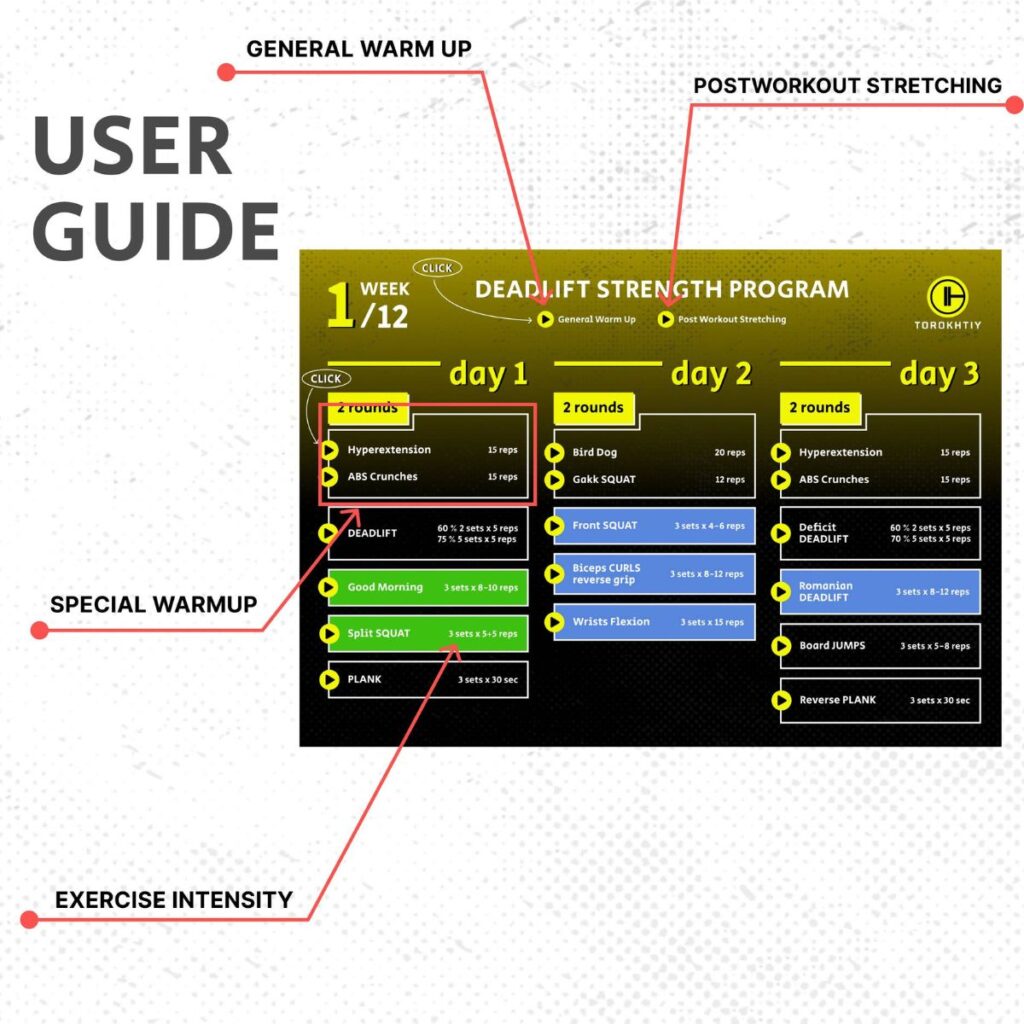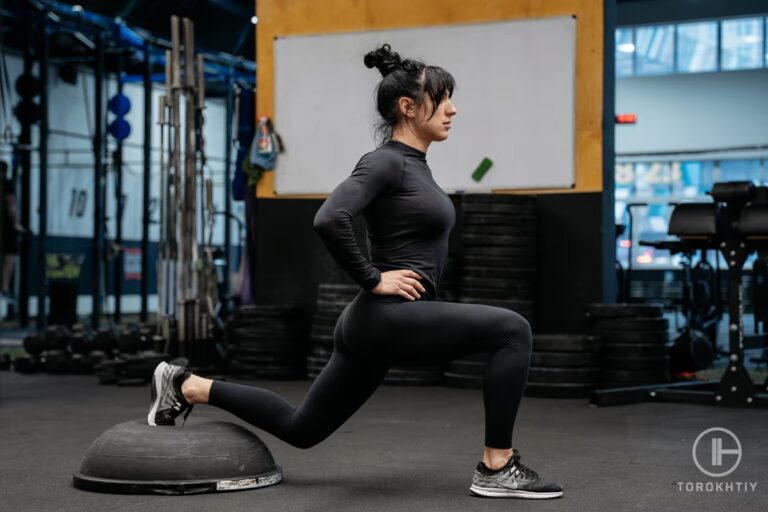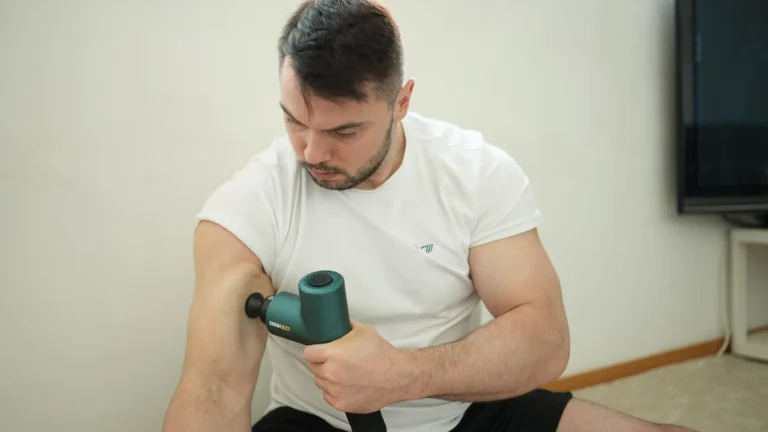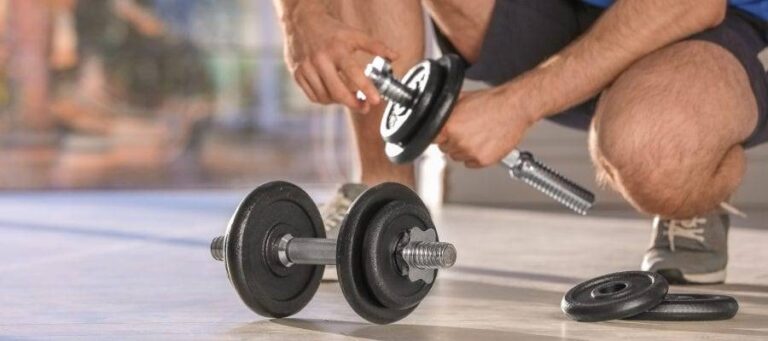How to Improve Deadlift Grip Strength?
If you’re looking to improve your deadlifts, a crucial aspect is grip strength. This part is often overlooked, and we will be taking a look at all effective tips to help you improve your deadlift grip strength. Let’s discover how to improve deadlift grip strength.
If you want to know how to improve deadlift grip strength, focus on the movements that strengthen your forearms and hand muscles. Exercises like farmer’s walks, plate pinches, towel pull-ups, gripper exercises, barbell holds, and fat grip training are great examples. You’ll prevent losing grip on deadlift and be able to lift heavier.

What Is Deadlift Grip?
For those who don’t know what the deadlift grip is and how to improve grip strength for deadlift, the grip is how you hold the barbell while performing a deadlift. A strong grip is essential for keeping the barbell stable and in control while performing the exercise. There are two main types of deadlift grips:
Double overhand grip: In this grip, the barbell is gripped with both palms toward the body. It is the most basic and symmetrical grip since the weight distribution across both hands is the same. This grip is ideal for beginners or for people looking to build their grip strength. The double overhand grip might be challenging to maintain as you increase your lifting capacity, especially if you have weaker grip strength.

Mixed grip: There are some limitations to the double overhand grip, which is where the mixed grip comes into play. One palm has a pronated grip, while the other palm has a supinated grip. The mixed grip creates a rotational lock on the bar, and it reduces the chances of the barbell slipping out from your hands. This grip is highly used by experienced lifters, and it helps them lift heavier weights.

Developing grip strength is very important to prevent grip fatigue and maintain control over the barbell. Frequently incorporating exercises that will strengthen your grip will positively impact your deadlift performance.
By incorporating grip-strengthening exercises and regularly working on these aspects, your deadlift grips would be better, and you would be able to handle and control more weight while preventing grip fatigue. Always know that these things take time and consistency.
Why Is Deadlift Grip Strength Important?
Having a strong grip is very important for your deadlift performance and also to maintain safety. It has a direct impact on your ability to control the barbell and lift heavy weights. Let’s take a look at the benefits of improving grip strength for deadlift.
1. Enhanced Lifting Performance
Having a strong grip lets you exert maximum force on the barbell, which lets you lift heavier weights with better efficiency.
2. Improved Control And Stability
When you have high grip strength, you can control the barbell and keep it stable throughout the lift. It reduces the risk of the barbell slipping or rotating out of your hands.
3. Reduced Risk Of Accidents
Because the chances of you losing your grip on the barbell are minimized because of high grip strength, the risk of injuries or accidents is also reduced significantly.
4. Increased Muscle Activation
The muscles in your upper body, hands, and forearms are greatly engaged when you tightly grip the barbell, which leads to increased muscular development.
5. Strengthened Forearm And Hand Muscles
The strength in your muscles and arms also increases when you challenge your grip strength regularly, which increases your overall upper body strength.
6. Transferable Strength Gains
These strength gains aren’t just useful only for deadlifts. It has a positive impact on all other exercises that require good grip strength, like pull-ups and rows.
When you focus on improving your deadlift grip strength, you’ll be able to lift heavy weights with better efficiency, and the chances of you getting injured due to grip-related limitations will also drop significantly.

How To Test Your Grip Strength?
Testing your grip strength is a great method for determining your existing level of grip strength and pinpointing areas that need improvement. Here are a few effective ways to assess your grip strength and establish a baseline:
- Hand dynamometer: A hand dynamometer is a tool that measures the strength of a person’s grip. Squeeze the dynamometer as hard as you can while holding it in your hand. The dynamometer will show the force applied, giving you a numerical assessment of how strong your grasp is.
- Pinch Grip Test: The pinch grip test measures how well your fingers and thumb work together. Squeeze together your thumb and fingers while holding a pinch grip meter between them. Your pinch grip strength will be indicated by the meter’s readout of the force applied.
- Bar hang test: This test evaluates both grip power and stamina. Find a sturdy overhead bar or pull-up bar. Then, grab it with an overhand hold, and hang on it as long as you can. Your grip endurance will be stronger the longer you can hang.
- Pinch grip test: Take two identical weight plates in your hands. Then, pinch them together between your fingers and thumb, and hold them there as long as you can. The pinch grip test measures the strength of your fingers and thumbs and reveals how well you can pinch anything.
- Grip squeeze test: Use a hand gripper or grip strengthener and squeeze it as firmly as you can. This is the grip squeeze test. Your grip strength will be measured and the device will offer resistance accordingly.
Focus on workouts and strategies that primarily target the hand muscles to improve your grip for deadlifts. Common examples include farmer’s walks, plate pinches, towel pull-ups, gripper exercises, barbell holds, and fat grip training. Your performance in deadlifts will surely be increased by these workouts, since it puts pressure on your grip and works to increase overall grip strength.
You can monitor your development and modify your training by regularly evaluating your grip strength. Plan accordingly to strengthen your grip over time, and keep an eye on your progress to make sure you’re on the correct track. To maximize your lifting potential, put time and effort into developing your grip, since it is a crucial aspect of deadlifts.

How To Build Deadlift Grip Strength?
Building a strong grip for deadlifts is essential for reducing the risk of injuries and maximizing your lifting potential. So, here are some effective strengthening methodsand tips on improving grip strength for deadlift.
1. Use A Double Overhand Grip For Warm-Ups
It is better to use the double overhand grip during warmups because this grip challenges your grip strength. It will have a more intense impact on your grip strength.
2. Incorporate Mixed Grip For Heavy Sets
When the weights get heavier, you can switch the grip to a mixed grip. It will let you lift heavier weights while also reducing the risk of the bar slipping out of your hands.
3. Implement Barbell Holds
Load the barbell with a weight heavier than your 1RM. Then, lift it and hold it at the top for as long as you can. This exercise works on your grip endurance and strength.
4. Utilize Fat Grip Training
Fat grip training is essential as the increased diameter puts more work on your grip strength and activates the muscles in your forearms and hands to a greater extent.
5. Incorporate Grip-Intensive Assistance Exercises
Including grip-intensive exercises like farmer’s walks, rope climbs, pull-ups, and kettlebell swings would greatly engage your hand muscles and promote grip strength.
6. Progressive Overload
Be it any muscle group, progressive overload is key. Progressive overload will help you improve your grip strength. So, slowly increase the weights you lift and challenge your grip with these sets.
7. Focus On Grip-Specific Exercises
Grip-specific exercises like plate pinches would help you improve your grip strength. These exercises target your grip strength directly, so it’s essential to incorporate them.
8. Improve Overall Forearm Strength
Strengthening your forearm muscles contributes to better grip strength, so it’s better to work on your forearms by incorporating exercises like wrist curls, reverse wrist curls, and forearm squeezes.
9. Avoid Relying On Straps
Straps are indeed useful for certain situations, don’t rely on them while deadlifting since they can hinder your grip strength. Use straps only when you’re working on grip-endurance training or performing higher-rep or higher-weight sets.
By using these tips and tricks, you’ll see a significant increase in your deadlift grip strength. Always intensify the training gradually and stay consistent throughout the course of it. If you are patient and consistent, your lifting potential and deadlift performance will indeed be enhanced.

Best Exercises To Improve Your Grip Strength
As mentioned earlier, improving your grip strength is not only essential for deadlifts but for many other activities where grip strength plays an important role. So, here are some good exercises that will help you understand how to strengthen grip for deadlift.
1. Crush Grip Exercises
Crush grip exercises are the ones that help improve your ability to squeeze and crush objects. Some common exercises include:
- Hand Grippers: Squeezing hand grippers develop your crush grip by working the muscles in your hands and fingers.
- Grip Balls: Squeezing grip balls or stress balls with the maximum force that you can apply is an effective way to enhance your crush grip.
2. Pinch Grip Exercises
Pinch grip exercises focus on strengthening your fingers and thumb. Common exercises include:
- Plate Pinches: For this exercise, hold the weight plates between your fingers and thumb, either vertically or horizontally. This exercise challenges your pinch grip.
- Pinch Grip Holds: Pinch grip holds include pinching and holding onto objects such as pinch blocks or pinch grip plates to improve your pinch grip strength.
3. Support Grip Exercises
Support grip exercises challenge your ability to hold onto objects for as long as you can. Common exercises include:
- Farmer’s Walks: Carrying heavy dumbbells, kettlebells, or weight plates for a specific distance. It challenges your grip endurance and improves your support grip.
- Dead Hangs: Hanging from a pull-up bar or other sturdy overhead bar for as long as you can. It also helps build your support grip strength.
4. Wrist And Forearm Exercises
These exercises strengthen your wrists and forearms, and they contribute to overall grip strength. Common examples include:
- Wrist Curls: You have to curl the dumbbell or the barbell with your wrist in this exercise. Perform wrist curls to work the muscles in your forearms and wrists.
- Reverse Wrist Curls: These are just like wrist curls, but they target the muscles on the opposite side of your forearms.
5. Thick Bar Training
These exercises involve using a thick bar or using grip attachments on standard bars. It challenges your grip strength since the bar’s diameter is now increased, making it difficult for you to hold on.
6. Towel Exercises
As you can guess from the name, these exercises involve gripping ropes or towels. Common exercises include towel pull-ups and towel hangs.
Adding a variety of these exercises would be the most beneficial as they’ll all target different aspects of your grip strength. You can gradually make the exercise more difficult by varying things or adding more resistance. But progressive overload and consistency are always the key here.
🔻12-Week Deadlift Strength Program by Oleksiy Torokhtiy
Unlock your true potential with our Deadlift Strength Program!
Designed for athletes by 2-time Olympian Oleksiy Torokhtiy, this 12-week program focuses on enhancing your deadlift strength, strengthening your back and legs.
Program details:
- 12 weeks;
- 3 days / week;
- 45-120 minutes per session;
- 50+ specific exercises;
- Focus on New Result in Deadlift;
- One-time payment, no recuring payments;
- Full access to all training content.
Start now and boost your deadlift results!
FAQ
Should We Use Straps In Deadlift Training?
It all comes down to personal opinion on this one. Straps are great for targeting the muscles of the back and legs without you losing your grip on the bar. But, relying on straps can negatively affect the development of your grip strength. In our opinion, it is best to only use straps for grip endurance training or sets with higher weights or reps.
How To Increase Grip Strength At Home?
If you want to know how to build grip strength at home, you can increase your grip strength at home with the help of simple exercises that can be performed with household items. For instance, towel hangs where you grip a towel that’s hanging on a bar or squeezing stress balls. Even pull-ups can be of great help here.
Conclusion
So, these were all the methods, tips, and exercises for improving deadlift grip strength. To have a better deadlift, it is essential to pay attention to this aspect of the exercise. If you have any more deadlift grip strength tips, let us know in the comment section.
Also read:
- How Many Calories Does Deadlifting Burn
- How Many Times a Week Should I Deadlift
- Is a 500 LB Deadlift Good
- Deadlift Bar Weight
- Do Deadlifts Work Abs
- Benefits of Deadlifting Everyday
References:
- How to Strengthen Your Grip for Deadlifts // WikiHow: https://www.wikihow.com/Strengthen-Your-Grip-for-Deadlifts
- How to Maximize Your Deadlift Grip // PowerliftingTechnique: https://powerliftingtechnique.com/how-to-maximize-your-deadlift-grip/
- How to Train Grip Strength // BarrHealth: https://barrhealth.com/grip-strength/
- 5 Ways To Improve Your Grip & Deadlift More Than Larry Wheels // GenerationIron: https://generationiron.com/improve-grip-strength/
- WSBB BLOG: DEADLIFT GRIP STRENGTH // WestsideBarbell: https://www.westside-barbell.com/blogs/the-blog/wsbb-blog-deadlift-grip-strength
Why Trust Us?
With over 20 years in Olympic Weightlifting, our team does its best to provide the audience with ultimate support and meet the needs and requirements of advanced athletes and professional lifters, as well as people who strive to open new opportunities and develop their physical capabilities with us.
By trusting the recommendations of our certified experts in coaching, nutrition, dietology, and sports training programming, as well as scientific consultants, and physiotherapists, we provide you with thorough, well-considered, and scientifically proven content. All the information given in the articles concerning workout programming, separate exercises, and athletic performance, in general, is based on verified data. We ensure that you can rely on our professionals’ pieces of advice and recommendations that can be treated as personalized ones which will benefit you and fully meet your needs.
The product testing process is described in more detail here
Author: Sergii Putsov
Head of Sport Science, PhD
Best Results: Snatch – 165 kg,
C&J – 200 kg
Sergii Putsov, Ph.D., is a former professional weightlifter and National team member, achieving multiple medals in the 94 kg weight category at national competitions. With a Master’s degree in “Olympic & Professional Sport Training” and a Sport Science Ph.D. from the International Olympic Academy, Greece, Sergii now leads as the Head of Sport Science. He specializes in designing training programs, writing insightful blog articles, providing live commentary at international weightlifting events, and conducting educational seminars worldwide alongside Olympic weightlifting expert Oleksiy Torokhtiy.








